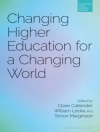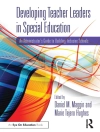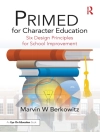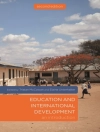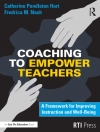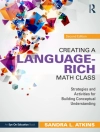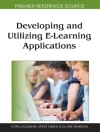Assessment for learning [Af L] is bound up with students becoming autonomous lifelong learners who are active participants in the classroom and beyond. This book explores teacher and student experiences of Af L interactions in primary science and technology classrooms. Working from a sociocultural perspective, the book’s fundamental premise is that Af L has a contribution to make to students developing identities as accomplished learners and knowers. The focus is on understanding and enhancing teacher practices that align with the spirit of Af L. The following points are illustrated: • Af L interactions are multifaceted, multimodal and take place over multiple time scales. • Student learning autonomy is promoted when teachers provide opportunities for students to exercise agency within a system of accountabilities. • Teacher pedagogical content knowledge plays a pivotal role in teachers being able to respond to students. • Productive Af L interactions are reflective of the way a particular discipline generates and warrants knowledge. The book will be of interest to teachers and educational researchers who want to examine Af L from a theoretical and a practical perspective
Tabella dei contenuti
Acknowledgement; Preface; Chapter 1: Our Aspirations; Why a Focus on Assessment for Learning Interactions?; The Promise; The Challenges; What this Book Seeks to Accomplish; How this Book Tells Our Story; Chapter 2: Assessment for Learning Interactions: Setting Out Our Thinking; Our Understanding of Assessment for Learning; Taking a Sociocultural View to Assessment for Learning Interactions; Teacher Repertoires of Assessment Practice Play a Role in Assessment for Learning Action; Assessment for Learning is Dynamic and Distributed Over Ideas, People, Actions and Resources; Dialogue and Scaffolding are Central to Assessment for Learning; Assessment for Learning Needs to Occur on Multiple Temporal Levels Simultaneously; Assessment for Learning is an Influence on Student Experience of Themselves as Learners; Concluding Comments; Chapter 3: Elaborating Our Context; The New Zealand Assessment Context; Science and Technology Education in New Zealand; The In Si TE Project; Working in Partnership; The In Si TE Students and Teachers; Teachers’ Existing Ideas about Teaching Science and Technolgoy; The In Si TE Units; Chapter 4: Strengthening Teacher Planning and Preparation; Why a Focus on Planning and Preparation?; The In Si TE Subject–Specific Planning Frameworks; The Technology Learning Intentions Planning Layer; The Science Learning Intentions Planning Layer; Looking Across both Learning Intentions Layer; The Second Teaching Outline Layer; What was the Benefit of Careful Planning?; The Planning Framework as a Mediational Tool in Our Community of Practice; The Planning Framework as a Mediational Tool in Classroom Practice; Concluding Comments; Chapter 5: Assessment for Learning Interactions as Multimodal; Moving into the Multimodal Classroom; Extended Example 1: It’s a Kiwi; Whole Lesson Comment; Extended Example 2: Making Percussion Instruments; Augmenting Talk and Writing with Modelling, Demonstrative Action and Role–Play; Challenges in the Use of Multiple Modes;Concluding Comments; Chapter 6: Material Artefacts as Scenarios and Resources for Ideas and Interaction; Why a Focus on Material Artefacts?; The Value of Concrete Examples: Interacting with Real Artefacts; The Use of Real Artefacts in Science; The Use of Real Artefacts in Technology; Teacher–Designed Artefacts Augment Talk; Artefacts to Activate and Problematise Student Knowledge and Experiences; Teacher–Designed Artefacts to Introduce Ideas; Challenges in the Use of Artefacts; Concluding Comments; Chapter 7: Pursuing Learning as Coherent, Connected and Cumulative; Why a Focus on Time?; Planning for and Responding to Student Learning as Connected and Cumulative; Talk to Develop Continuity, Connections and Coherence Over Time; Success Criteria as Source and Means for Developing Continuity, Connections and Coherence Over Time; Artefacts to Develop Continuity and Connection; Responding to Student Learning Over Time; Concluding Comments; Chapter 8: Fostering Student Learning Agency and Autonomy; What is Involved with Student Learning Agency and Autonomy?; Patterns of Participation for Learning as a Social and Shared Responsibility; Routines and Frequently Used Task Structures Constructing Learning as a Social Process; Recognising and Crediting Student Ideas and Suggestions; Patterns Associated with Freedom to Move and Seek out Support and Resources; The Distribution of Authority and Sources of Knowledge and Feedback; Fading Scaffolding to Support Agency and to Share Authority; Creating Opportunities to Experience and Understand how Quality is Judged; Activating Peers and Others as Sources of Information and Feedback; Seeding the Environment with Material Resources to Support Student Agency; Fostering Student Affiliation with Science and Technology; Attributing Value to Student out of School Experiences; Attributing Students with the Identity of Scientist/Technologist; Students Talking about Science and Technology; Concluding Comments; Chapter 9: Concluding Thoughts; Some Concluding Comments on Assessment for Learning in Practice; Some Implications for Further Research; Some Implications for Policy; Affirming our Definition of Assessment for Learning; References; Subject Index.


